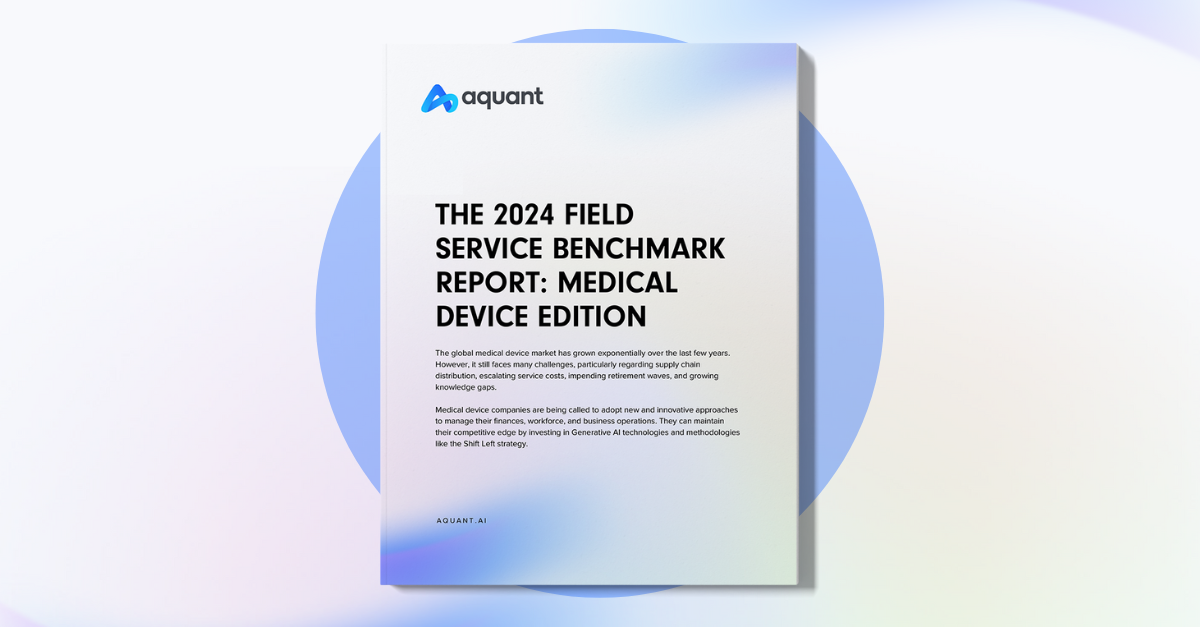No doubt, you’re closely monitoring KPIs like first-time-fix, technician utilization, and SLA compliance. But one of the most difficult and neglected KPIs to track is efficient parts usage. Service leaders have many different names for it: shotgunning, swap til you drop, troubleshooting with parts, you name it!
These hidden excess costs might indicate a trend of field technicians going through far more parts than required for the number of jobs completed.
You might assume it is just the cost of doing business. In reality, you likely have a knowledge gap problem.
Lack of Insights Rack Up Hidden Costs in the Field
In an effort to resolve complex issues quickly, especially if SLAs or other deadlines are at risk of going in the red, technicians think on their feet. But if those techs lack insight into the root cause of issues or face other complications, trying any solution that comes to mind to get the job done might mean dramatically higher service costs.
Instead of choosing the most cost-effective method to complete a customer request, inexperienced technicians often throw everything but the kitchen sink at the problem — experimenting with countless parts and resolution procedures until the equipment works again.
That often means trying out the most expensive parts first when a simple calibration may have been the answer. Ultimately, the box gets checked, and the issue is resolved but a lot of man-hours and spare parts were wasted in the process. And applying a stopgap solution might mean that the underlying problem still remains, prompting repeat visits and mounting client frustration.
Get to the Root Cause Quicker and Reduce Parts Usage
Don’t make your techs on the ground rely on guesswork to get the job done. The advancement of AI and machine learning in recent years has created exciting new opportunities for products that can empower your field service team and help bridge the knowledge gap between junior and senior staff. You can provide your entire team with meaningful information that imparts years’ worth of wisdom in just days.
Dynamic, intelligent tools like Aquant’s Intelligence Triage, which understand the context of questions and input regardless of word choice, help your team resolve issues faster and more accurately. Instead of trial and error, these tools tap into organizational data to provide techs on-site with the most efficient path to resolution — ultimately increasing client satisfaction while lowering service costs.
And depending on the severity of the problem, your call center reps may be able to diagnose the problem before dispatching a tech. Using a dynamic neural network, reps can go through a series of triage questions with customers on the phone.
The questions are auto-generated based on the current problem and historical data. Together, the info will help predict the most likely resolution, or at least narrow down the issue so the tech is best informed before arriving at the job.
The Solution to Fewer Parts Wasted & Reduced Service Costs
Hidden Data, Not Wizardry Holds the Key
If you want to end the parts problem and empower your techs to make cost-effective service decisions, you’ve got to give your entire team access to information. You might think your best techs are magicians, but what really sets them apart is the tribal knowledge they’ve got in their head from years’ worth of on-the-job experience. But facing a changing workforce, AI tools will help bridge the knowledge gap and provide equal access to the kind of information that created the select few experts on your team. However, even before that, you’ve got cull your company’s data — all of it — in new ways.
Smart technology can collect and analyze all your historical data, including neatly structured data from your CRM and parts databases, and even free text from work orders, service tickets, and other sources. Then it applies machine learning to unlock significant insights that may not appear in any training manual.
With an intelligent system, customer-facing agents can use AI-driven triage to troubleshoot the problem while on the phone, while techs in the field, even those with just a month or two of experience, can perform like your most knowledgeable experts because they’ll be more confident in their decision making.
In a matter of months, you’ll see costs go down as service issues are completed using the right parts for the job on the first visit, with fewer man-hours and truck rolls.
Check out how our customer Rational was able to realize in their brief testimonial video and contact us today to start your own service transformation journey.
Recent Posts
-

AI and Shift Left Will Propel Success in Medical Device Service, Says New Aquant Report
Read More »March 05, 2024 Janice Camacho







